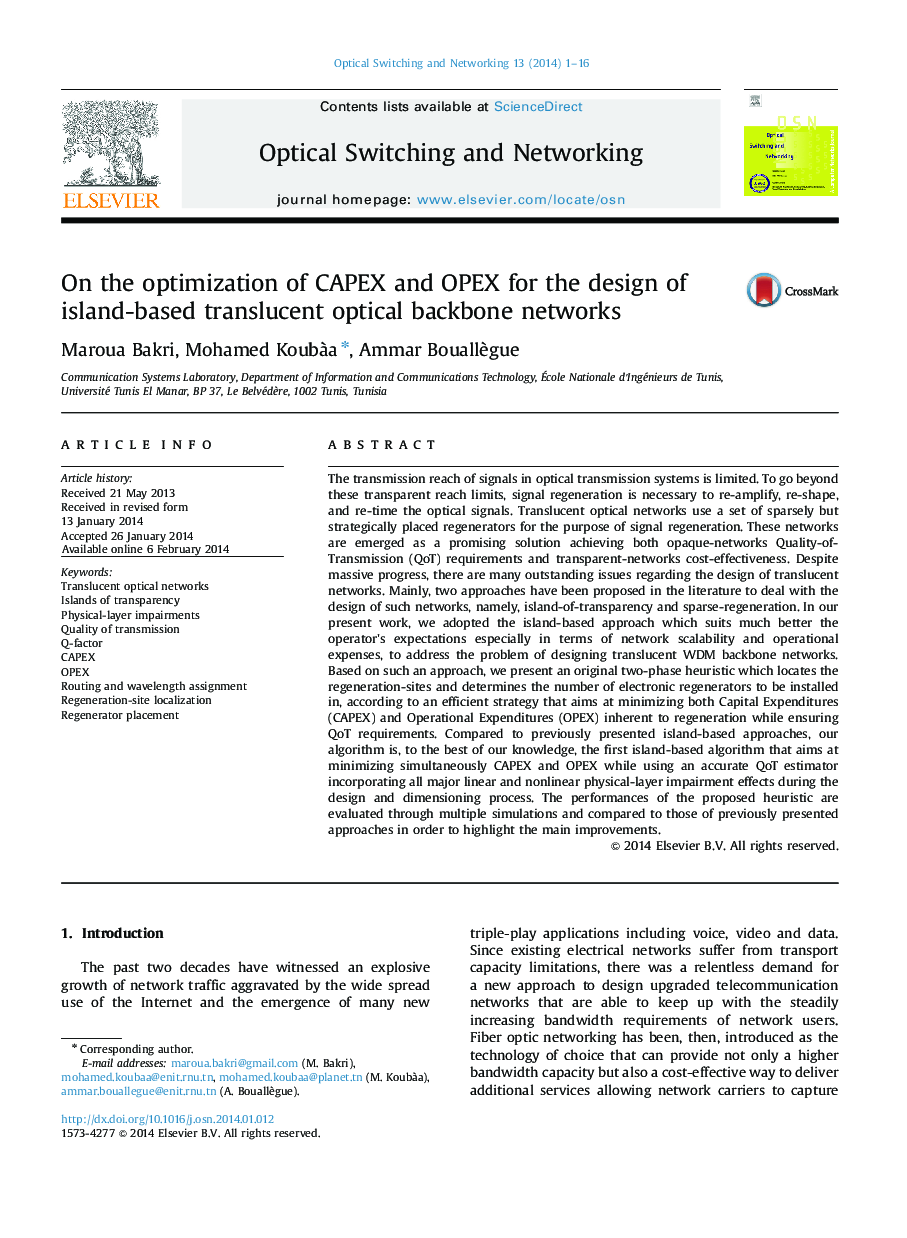| Article ID | Journal | Published Year | Pages | File Type |
|---|---|---|---|---|
| 6888467 | Optical Switching and Networking | 2014 | 16 Pages |
Abstract
The transmission reach of signals in optical transmission systems is limited. To go beyond these transparent reach limits, signal regeneration is necessary to re-amplify, re-shape, and re-time the optical signals. Translucent optical networks use a set of sparsely but strategically placed regenerators for the purpose of signal regeneration. These networks are emerged as a promising solution achieving both opaque-networks Quality-of-Transmission (QoT) requirements and transparent-networks cost-effectiveness. Despite massive progress, there are many outstanding issues regarding the design of translucent networks. Mainly, two approaches have been proposed in the literature to deal with the design of such networks, namely, island-of-transparency and sparse-regeneration. In our present work, we adopted the island-based approach which suits much better the operator׳s expectations especially in terms of network scalability and operational expenses, to address the problem of designing translucent WDM backbone networks. Based on such an approach, we present an original two-phase heuristic which locates the regeneration-sites and determines the number of electronic regenerators to be installed in, according to an efficient strategy that aims at minimizing both Capital Expenditures (CAPEX) and Operational Expenditures (OPEX) inherent to regeneration while ensuring QoT requirements. Compared to previously presented island-based approaches, our algorithm is, to the best of our knowledge, the first island-based algorithm that aims at minimizing simultaneously CAPEX and OPEX while using an accurate QoT estimator incorporating all major linear and nonlinear physical-layer impairment effects during the design and dimensioning process. The performances of the proposed heuristic are evaluated through multiple simulations and compared to those of previously presented approaches in order to highlight the main improvements.
Related Topics
Physical Sciences and Engineering
Computer Science
Computer Networks and Communications
Authors
Maroua Bakri, Mohamed Koubà a, Ammar Bouallègue,
